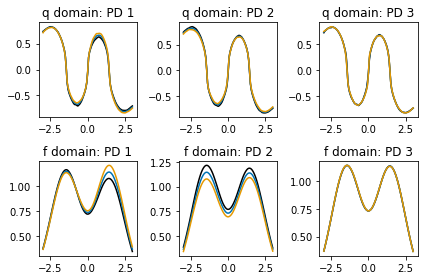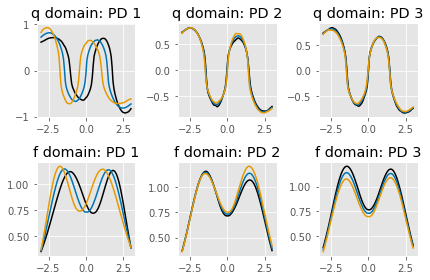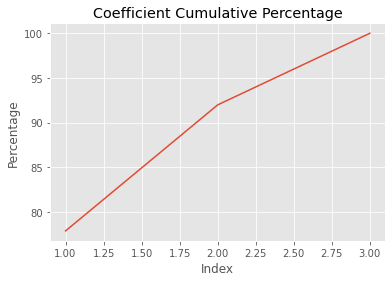Elastic Functional Principal Component Analysis¶
After we have aligned our data we can compute functional principal component analysis (fPCA) on the aligned data, warping functions, and jointly
[1]:
import fdasrsf as fs
import numpy as np
We will load in our example data again and compute the alignment
[2]:
data = np.load('../../bin/simu_data.npz')
time = data['arr_1']
f = data['arr_0']
obj = fs.fdawarp(f,time)
obj.srsf_align(parallel=True)
Initializing...
Compute Karcher Mean of 21 function in SRSF space...
updating step: r=1
updating step: r=2
Vertical fPCA¶
We will first compute fPCA on the aligned functions, by constructing the object and computing the PCA for the number of components, default=3)
[3]:
vpca = fs.fdavpca(obj)
vpca.calc_fpca(no=3)
We then can plot the principal directions
[4]:
vpca.plot()


Horizontal fPCA¶
We can then compute PCA on the set of warping functions
[5]:
hpca = fs.fdahpca(obj)
hpca.calc_fpca(no=3)
We then can plot the principal directions
[6]:
hpca.plot()


Joint fPCA¶
We can also compute the fPCA on jointly on the phase/amplitude space if we feel there is correlation between the variabilities
[7]:
jpca = fs.fdajpca(obj)
jpca.calc_fpca(no=3)
We then can plot the principal directions
[8]:
jpca.plot()


